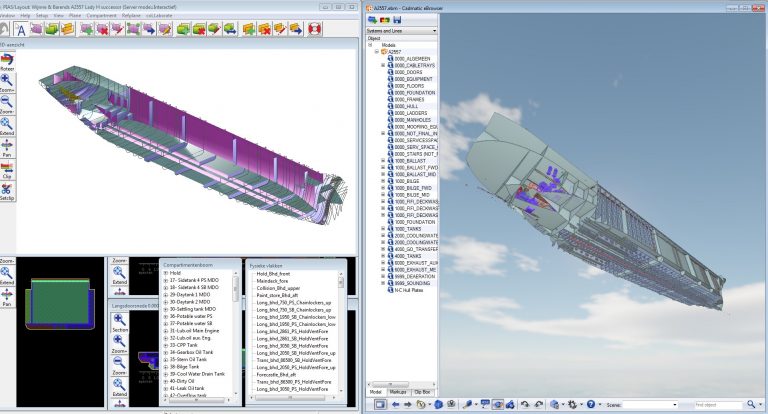Naval architects around the world use PIAS on a daily basis to create, calculate and analyse ship designs. PIAS assists in all stages of naval architecture: from the first preliminary sketch up to the final design.
PIAS: professional ship design software
We have been using PIAS by SARC since 1988 to calculate intact and damage stability as well as designing various vessels. From the very beginning, there has been close contact between our companies so that we can share first-hand how PIAS is being used.
A flexible program
Conoship has been involved in the development for some time, for example, we were the first to use the physical planes in Layout to define subcompartments. Over the years, we have gained a great deal of experience, which has enabled us to develop a unique working method within PIAS. Jan van der Zee, Naval Architect at Conoship International and the application manager of PIAS says about this: “I like the fact that I can speak directly to a developer. This way you stay well informed. This direct contact is not available at every company. As a result, problems are solved quickly”.
Jan is mostly involved in the concept and basic design phases and engineering. For example, he deals with hull form and stability in many design projects. “Over the past decades, we have built up an archive of PIAS files that we can often fall back on when, for example, a vessel is being lengthened”. When asked whether he could describe PIAS, Jan responds “I find the input and output of PIAS clear, it is a flexible program. I can quickly make a model during the design phase, so that it is quickly clear how the model is performing and whether it can be improved. It also saves a lot of time that Class is more often asking for a PIAS model instead of an input or ship data booklet”.
Probabilistic Damage Stability
About Probdam (Probabilistic Damage Stability) Jan says: “We have an advantage by using the compartment method. Using this method, the highest index is quickly found for the user”. This method has been offered within PIAS since 1990 and is recognized by the majority of classification societies. In addition, SARC is working on the further development of the numerical integration method so that its advantages are also recognized. This method gives more stable results than conventional approaches, while a number of practical pitfalls are avoided
Conoship uses PIAS for all its designs for which stability has to be calculated, also for assignments abroad. On this subject, Jan says: “PIAS offers all the marine engineering calculations we need for the types of ships we have to calculate. The new licensing system also provides many opportunities to rent modules temporarily”.
CPDES research project
Conoship recently participated in the Dutch Collaborative Platform for Design and Engineering of Ships (CPDES) research project in which SARC also participates. During the project, a two-way 3D data exchange between PIAS and CADMATIC Hull was created.
In the early design stage, most small and medium-sized shipyards and design offices have difficulty controlling consistency when exchanging the ship’s arrangement and hull data between the 2D General Arrangement (G.A.) plan and stability analysis tools. The exchange of design data is often done manually and it can take days to implement design changes like repositioning decks or bulkheads in the G.A. plan and analyzing the effects on the various design calculation applications. Performing damage stability calculations very late in the basic design process, for example, often involves a lot of rework and increased building costs if the design does not fulfil the requirements.
Time-consuming design data exchanges and managing the consistency of design data are designers’ main challenges. Therefore, uniform, modern data exchange interfaces between early design software tools and steel design software tools are very beneficial. With a focus on bulkheads & decks, compartments and piping, SARC created a V1.0 implementation, which covers intensively used data and actions, as well as a comprehensive manual and other instruction materials.
Pictures courtesy of SARC and Conoship International





